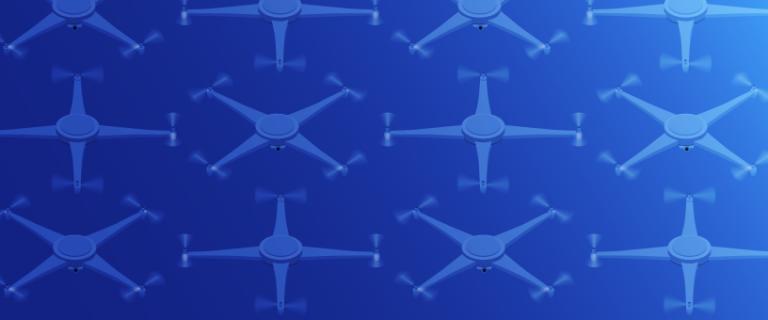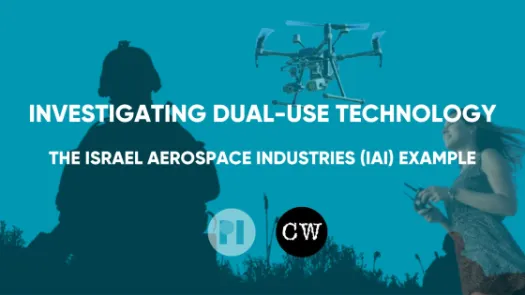Aerial surveillance refers to the systematic monitoring of an area or territory from an elevated vantage point, using a wide array of tools, including aircrafts, unmanned aerial vehicles (UAVs), satellites, balloons or other aerial platforms equipped with surveillance technologies. Despite its widespread use, aerial surveillance remains weakly regulated, without appropriate legal frameworks, oversight and safeguards, which allows states and corporations unfettered and often unlawful or arbitrary access to technologies.
When used in civilian sectors, aerial surveillance can aid agricultural practices, environmental conservation efforts, and emergency responses. Aerial surveillance however, is also widely used in security and law enforcement by government agencies and military forces to allegedly monitor borders, prevent illegal activities, and improve situational awareness.
As aerial surveillance technologies advance, individuals face heightened privacy and data protection risks. Their extensive monitoring capabilities can intrude into private spaces, capturing detailed data of their activities. This raises concerns about the vast scale of potentially highly sensitive data being collected, the manner in which it is processed and stored and which actors have access to it and for what purposes, both at the time of collection and far into the future.
What is the problem?
Aerial surveillance technologies, particularly those with enhanced capabilities, such as high-resolution imagery, can inadvertently capture detailed information about individuals’ activities, movements, and private property. The use of such intrusive technologies raises ethical and legal questions regarding the right to privacy, abusive surveillance practices, and the potential for misuse of surveillance data.
These technologies also bring with them a risk of indiscriminate surveillance, where entire populations or geographic areas are subject to constant monitoring, leading to a chilling effect on freedoms of expression, assembly and association, for example, protesters are less likely to exercise their rights to movement, assembly and expression due to fear of being surveilled.
Moreover, the potential for abuse of surveillance capabilities by governments, corporations, or other entities for purposes of targeted and mass surveillance, social repression or discrimination poses a significant threat to civil liberties and democratic values.
Overall, the proliferation of aerial surveillance technologies necessitates careful consideration of the balance between security, privacy, and individual freedoms to safeguard against potential abuses and protect fundamental rights in the digital age.
Why does it matter?
Aerial surveillance raises critical concerns around the infringement of the right to privacy and associated freedoms. It can fundamentally alter the dynamics of power and control in society, allowing for the development of a pervasive surveillance state. The erosion of privacy extends beyond individuals to communities and entire populations, perpetuating a culture of constant monitoring and suspicion.
Moreover, the indiscriminate nature of aerial surveillance undermines notions of trust and autonomy, instilling a sense of vulnerability among citizens. The vast amounts of data collected through aerial surveillance pose significant risks of misuse or exploitation, whether by governments, law enforcement agencies, or private corporations. This data could be weaponized to suppress dissent, manipulate public opinion, or perpetuate systemic injustices, for instance, reprisals against participants of a protest which was subject to aerial surveillance. As such, the unchecked proliferation of aerial surveillance technologies threatens not only individual freedoms but also the very fabric of democratic societies, necessitating robust safeguards and oversight mechanisms to protect against abuse and ensure accountability.
Furthermore, the use of AI solutions in aerial surveillance technology enables automated decision making, raising fears of bias, discrimination, and opaque decision-making processes. The potential for predictive analytics to preemptively target individuals or communities poses ethical dilemmas. For example, drone surveillance with AI capabilities which purports to identify aggressive behaviour in a crowd can autonomously, and perhaps incorrectly, report a person to the police. This is made even more troubling as research has shown racial bias remains prevalent in AI applications. To mitigate these risks, transparent governance, regulatory oversight, and ethical guidelines are crucial to ensure that AI-driven surveillance respects fundamental rights and values while serving the public interest.
What is PI doing?
We are challenging the drivers of surveillance by creating greater transparency through our research and investigations, raising awareness about the privacy implications of surveillance technology, and ensuring that legislation and practice around aerial surveillance is subject to robust controls and safeguards and compliant with international human rights standards.
- We conduct research on the proliferation of aerial surveillance, identify the actors involved, and challenge their uses where necessary. Among other topics, we conducted research on Satellite and aerial surveillance for migration.
- We communicate to the public on key issues including the use of drones technology in protests.
- We push national and international bodies to listen to people's concerns and take steps to protect their privacy. We also contribute to the development of international standards.
- Together with our global network, we advocate and campaign to protect the right to privacy, autonomy, and dignity.


